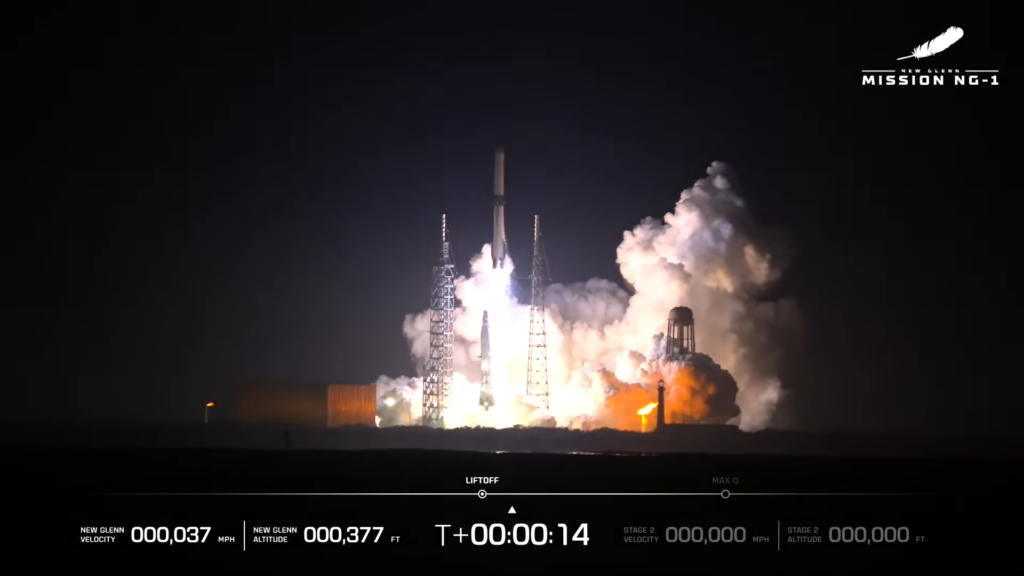SpaceX recently made headlines with its seventh test flight of the Starship rocket. The launch featured the much-anticipated “next-generation” upper stage design, but things didn’t go as planned. While the booster landed successfully, the upper stage of Starship failed during ascent, marking a significant setback for the company. Let’s break down what happened and why this test flight is so important.
What’s Happening & Why This Matters
The Launch: A Mixed Success
On 16 January, SpaceX launched its Starship rocket from Boca Chica, Texas. The rocket’s first stage, the Super Heavy booster, took off with 33 methane-fueled Raptor engines. The booster completed the landing phase, flying itself back to the Starbase facility and being caught by its “chopsticks” for a safe touch down. This success is an important milestone for SpaceX’s reusable booster technology.
However, the rocket’s upper stage, which carries the payload into orbit, also did not fare. During its ascent, six of the Raptor engines on the upper stage began shutting down, with one remaining active at a speed of 13,246 mph. SpaceX lost communication with the stage at 91 miles altitude, leading to the assumption that the upper stage was lost.

SpaceX CEO Elon Musk later tweeted an optimistic message: “Improved versions of the ship and booster already waiting for launch.” The company confirmed that the issue likely stemmed from an anomaly during the upper stage’s ascent burn; teams will review the data to pinpoint the cause.
The Upgraded Design and Ambitions
The Starship rocket’s upper stage had undergone several upgrades for this flight, including a new 7-foot extension, increasing the overall height to nearly 404 feet. The modifications also included a 25% boost in propellant volume, smaller and relocated fins, and improved heat-shielding tiles. These changes were meant to improve the stage’s performance and reduce refurbishment needs between flights.
One key goal of this flight was to deploy 10 dummy Starlink satellites, which would have tested the upper stage’s capacity to handle increased payloads. SpaceX plans to deliver up to 60 Starlink satellites in a single launch that enables gigabit-speed internet globally.
Unfortunately, the upper stage’s failure meant that these tests will have to wait until future flights. Additionally, Starship’s reentry phase, which would have tested its redesigned heat shielding, couldn’t proceed, delaying the evaluation of new materials meant to streamline the refurbishment process after each flight.
NASA, Space Exploration Implications
This setback could delay SpaceX’s plans, including its potential role in NASA’s Artemis lunar mission. NASA had invested heavily in Starship’s capabilities for its lunar landing version with a $2.89 billion contract. SpaceX’s progress on the upper stage is crucial to meet NASA’s requirements for deep-space missions, including propellant transfers in orbit.
However, SpaceX is known for quickly addressing issues and improving its technology. Despite the mishap, the company is likely to recover swiftly, keeping its momentum toward future missions.
Competition and Industry Context
On the same day as the Starship failure, SpaceX’s competitor Blue Origin also launched its massive New Glenn rocket. While the rocket successfully reached orbit, the company failed to land its booster on the Atlantic barge. The mixed success in the space industry on 16 January 16 reflects the varied, complex challenges. Space exploration and the continuous race to develop reusable technology is highly competitive and lucrative.

TF Summary: What’s Next
SpaceX’s seventh Starship test flight reminds the world of the unpredictable nature of space exploration innovations. While the booster technology showed promise, the failure of the upper stage will delay critical tests, particularly for NASA’s Artemis missions. However, SpaceX’s ability to rapidly analyze and fix issues means that Starship’s journey is far from over. Future tests will likely see refinements and improvements, with the company continuing its pursuit of reducing costs and increasing efficiency in space travel.
— Text-to-Speech (TTS) provided by gspeech


